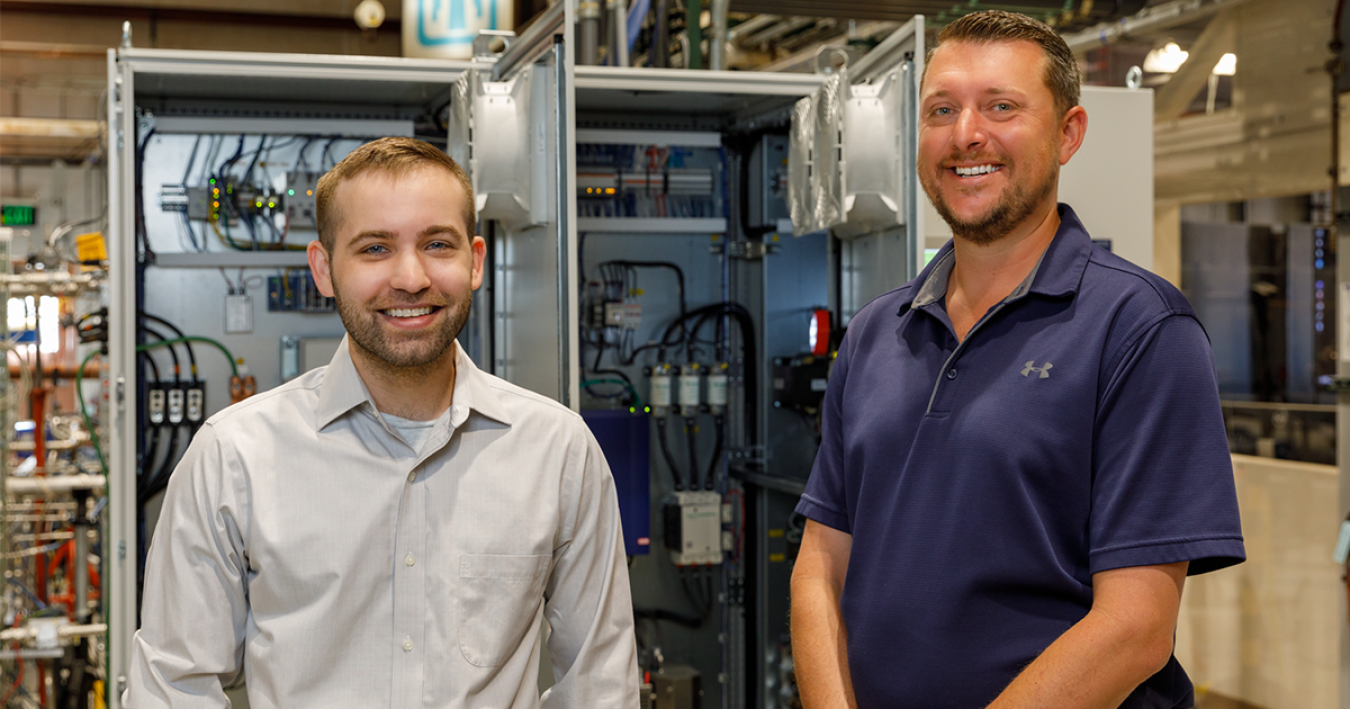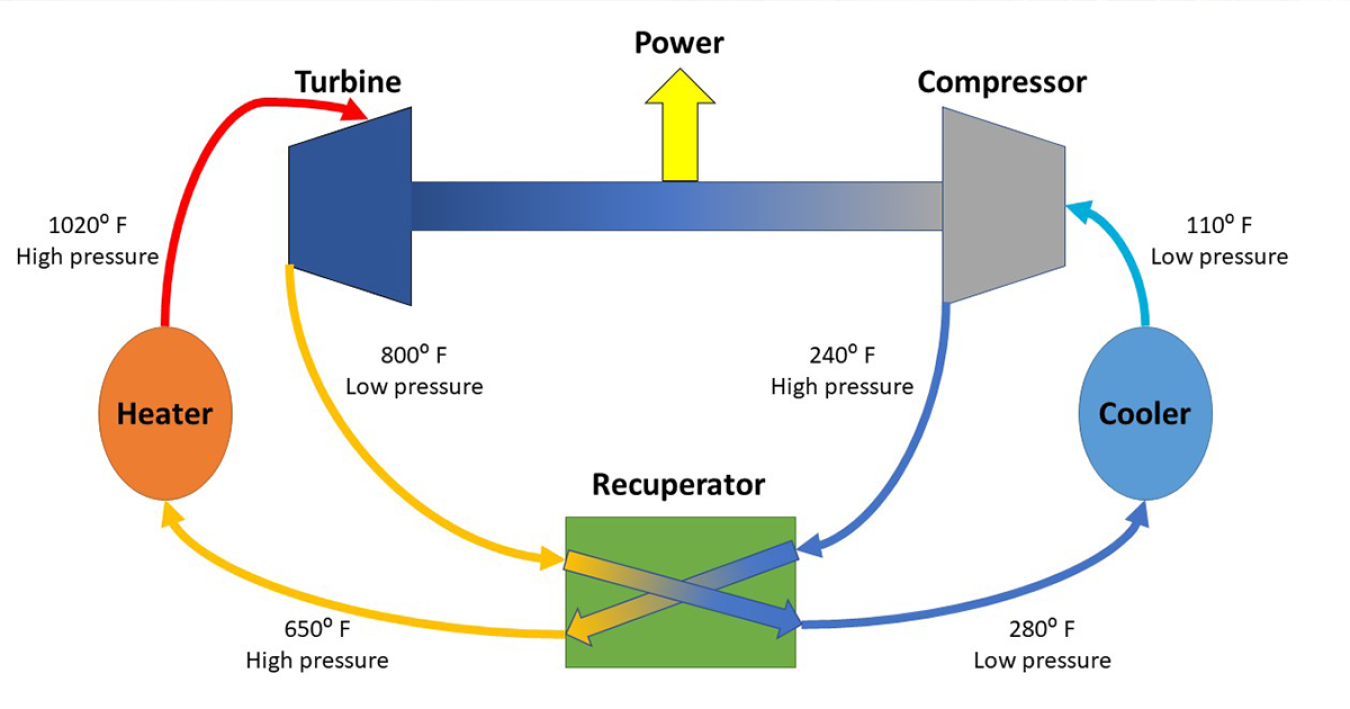Successful Sandia test takes major step forward in developing new energy conversion systems that could dramatically boost the efficiency of power plants across the country.
September 1, 2022

Sandia National Laboratories recently delivered electricity to a local grid for the first time using a new power-generating system.
The successful test is a major step forward in developing new energy conversion systems that could dramatically boost the efficiency of power plants across the country.
CLOSING THE LOOP
Sandia researchers developed a simple recuperated closed-loop Brayton cycle that uses supercritical carbon dioxide as the working fluid.
The gas runs through a continuous loop of being pressurized, heated, and expanded through a turbine to generate electricity. After the fluid exits the turbine, it is then cooled in a recuperator before returning to a compressor to complete the cycle.

For the test, researchers used an electric heater to heat up the supercritical carbon dioxide up to 600 degrees Fahrenheit. They then used advanced power electronics that they adapted from an elevator controls company to return power into the Sandia-Kirtland Air Force Base electrical grid.
The test delivered continuous power to the grid for 50 minutes and, at times, produced up to 10 kilowatts of electricity—roughly a third of the power an average U.S. home uses per day.
This was the first time grid operators agreed to take the power.
Previous attempts were dumped into load banks to avoid any disruptions to the grid.
“We’ve been striving to get here for a number of years, and to be able to demonstrate that we can connect our system through a commercial device to the grid is the first bridge to more efficient electricity generation,” said Rodney Keith, manager for the advanced concepts group working on the Brayton cycle technology.
Brayton Cycle Advantages
Current power plants such as natural gas, nuclear, and coal use a steam-based Rankine cycle to convert the heat they produce into electricity.
These systems lose two-thirds of the energy they could potentially produce when converting steam into water to repeat the cycle.
According to Sandia researchers, supercritical Brayton cycle systems could potentially improve that efficiency up to 50% due to the hotter temperatures that the material can reach (1,290 degrees Fahrenheit).
This could dramatically increase the efficiency of the nation’s power plants, including current reactors and new advanced reactor systems, natural gas and coal plants, and even concentrated solar power systems.
What’s Next?
The Sandia team is moving forward in scaling up its supercritical Brayton cycle technology.
Future tests will demonstrate a recompression closed Brayton cycle and then progress to a 1 MW-scale generator that will not need electrical power from the grid to heat the supercritical carbon dioxide.
The project was supported the U.S. Department of Energy’s Supercritical Transformational Electric Power (STEP) program, which is co-sponsored by the offices of Nuclear Energy, Fossil Energy and Carbon Management, and Energy Efficiency and Renewable Energy.
The STEP program works with industry to develop and mature technology to help commercialize supercritical carbon dioxide power cycle systems.
Explore more Office of Nuclear Energy milestones.

